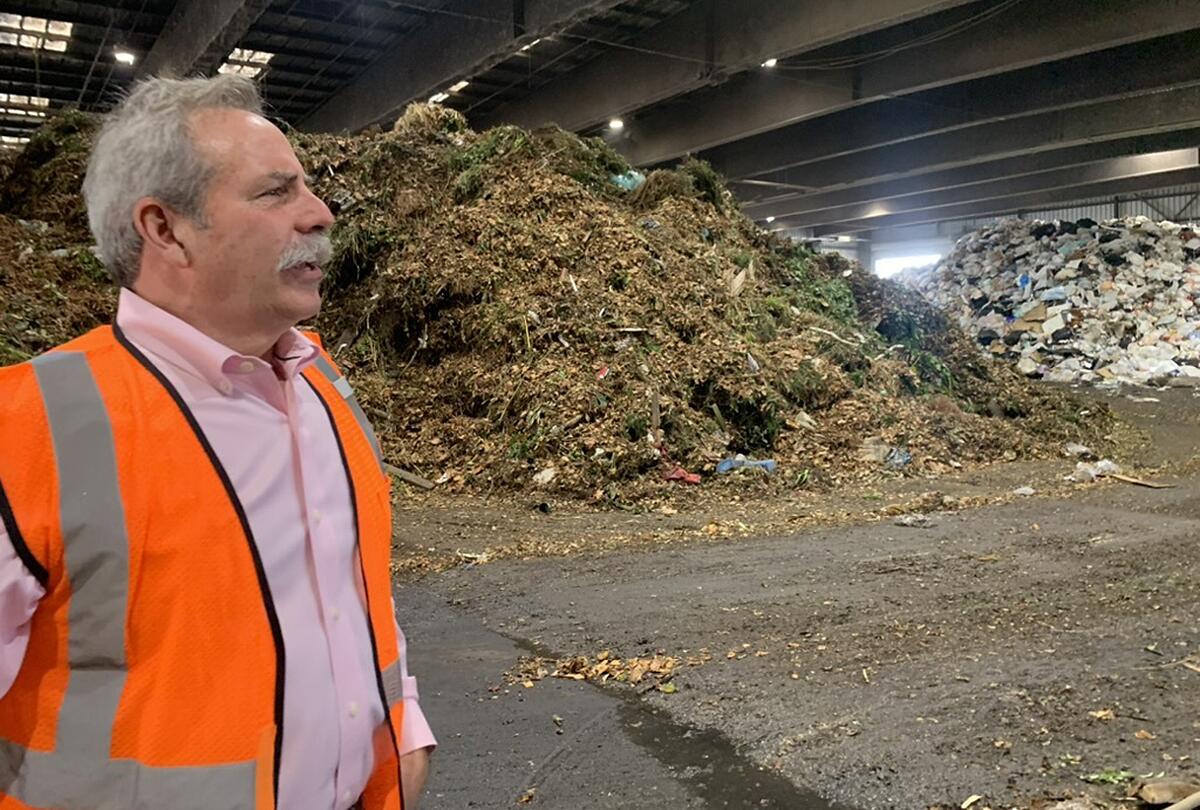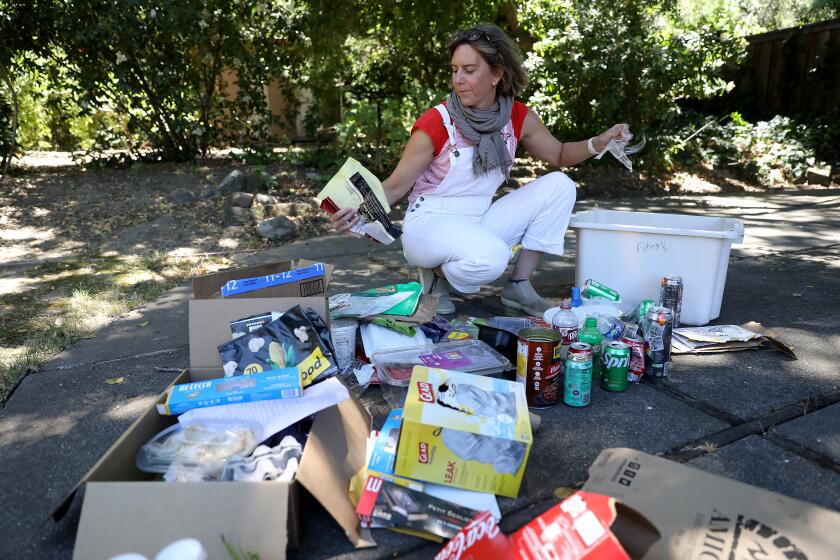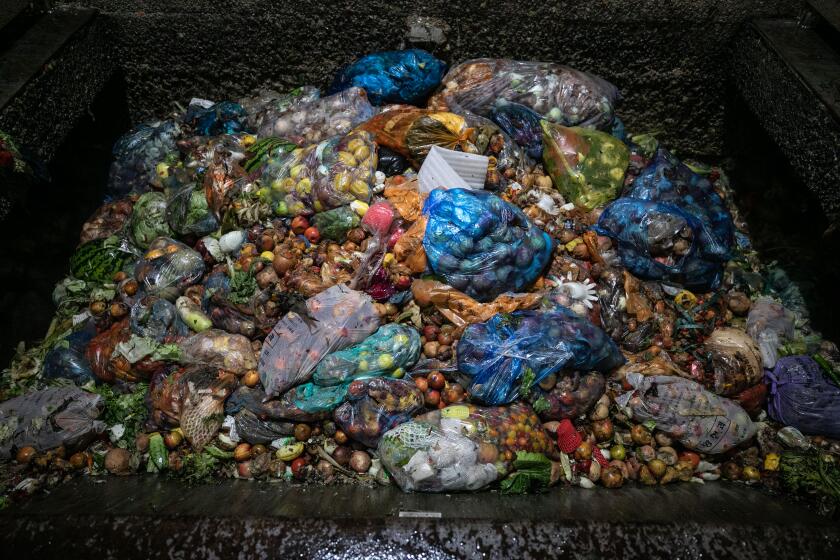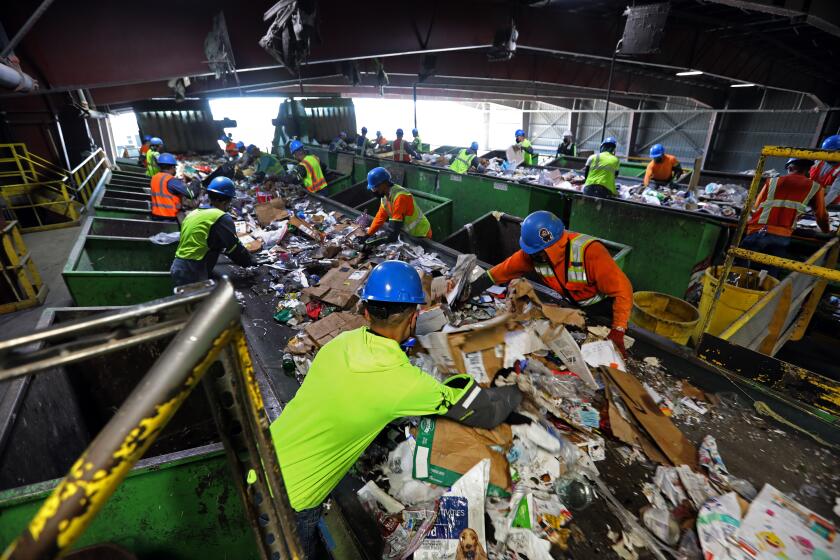California’s new ‘right to repair’ law is embraced by recyclers

SAN CARLOS — Joe La Mariana has seen it all; he got his sea legs in municipal waste 30 years ago. He’s now the executive director of RethinkWaste — one of the Bay Area’s largest and most innovative recycling centers in San Carlos.
He said there are few pieces of legislation that get him as excited as California’s new “right to repair” does.
Aggressive and impactful reporting on climate change, the environment, health and science.
“It’s a game changer,” he said, noting the legislation will reduce the number of items he has to send straight to the landfill and will open markets for materials — such as the rare earth minerals used in many batteries — that can be reused.
On Oct. 10, Gov. Gavin Newsom signed legislation that will provide Californians with the tools — the information, manuals and parts — they need to repair their cellphones, refrigerators, stoves and other electronic devices.
Plastics are everywhere. As an environment reporter, I make informed choices when shopping, trying to minimize the amount I bring in. Or I thought I was.
“Why do most 40-year-old refrigerators work like the day they were purchased but top-of-the-line new refrigerators barely last a decade if you’re lucky? That’s not innovation; that’s planned obsolescence,” said Nick Lapis, director of advocacy for Californians Against Waste, which lobbied for the legislation. “Not buying something new will almost always be better for the environment than recycling something and buying a replacement.”
Because California is one of the world’s largest economies, this bill is likely to have a domino effect across the country, Lapis said. Similar laws have been passed in New York, Colorado and Minnesota, although California’s is considered tougher.
In Seoul, a city of 10 million people that produces 2,500 tons of food waste daily, composting is second nature. Here’s how it happened.
“If California were its own country, it would have the fourth-largest economy in the world, larger than the U.K., Germany or France. What we do here matters. It matters in and of itself, but it also matters around the country and on the global stage,” Lapis said.
California’s law requires that electronics manufacturers provide appropriate tools, parts, software and documentation for seven years after production for devices priced above $100, and three years for less expensive devices.
Any company that fails to follow these rules will be fined $1,000 per day for the first violation, $2,000 per day for the second, and subsequently, any further violations will attract a $5,000-per-day fine.
California state Sen. Susan Talamantes Eggman (D-Stockton) sponsored the bill.
Californian’s recycling habits are changing for the better, but there’s still plenty of room for improvement.
Both Apple and HP supported the bill this year, along with 82 independent repair shops, 109 local elected officials and more than 50 environmental and consumer groups.
La Mariana said there are the obvious benefits of the law (allowing consumers the opportunity to fix an item if it’s broken, rather than just tossing it) as well as environmental benefits (less garbage in the waste stream).
But it will also help his business avoid costly accidents and potential injuries.
RethinkWaste is publicly owned and governed by local municipalities. La Mariana said in addition to waste and recycling material, it takes electronic waste and disposes of it for free for residents.
“But people think: Oh, this old cellphone or computer, it’s recyclable. And they throw it in with their recyclables,” he said during a recent tour of the San Carlos Shoreway Environmental Center.
“You see the mechanized equipment here?” he said, pointing to a three-story-high conveyor belt that moves waste through a row of human sorters, and then through a series of high-tech robots that image and sort waste depending on its composition. “When it gets in there, it creates fires.”
He said there’s at least one fire a month at the center, due to improperly tossed electronics — including a four-alarm fire in 2018 that almost burned the place to the ground, causing the center to close for four months at a cost of $8.5 million. He said power cords are another problem because they tangle the belts and gears of the machinery.
Toward a more sustainable California
Get Boiling Point, our newsletter exploring climate change, energy and the environment, and become part of the conversation — and the solution.
You may occasionally receive promotional content from the Los Angeles Times.











